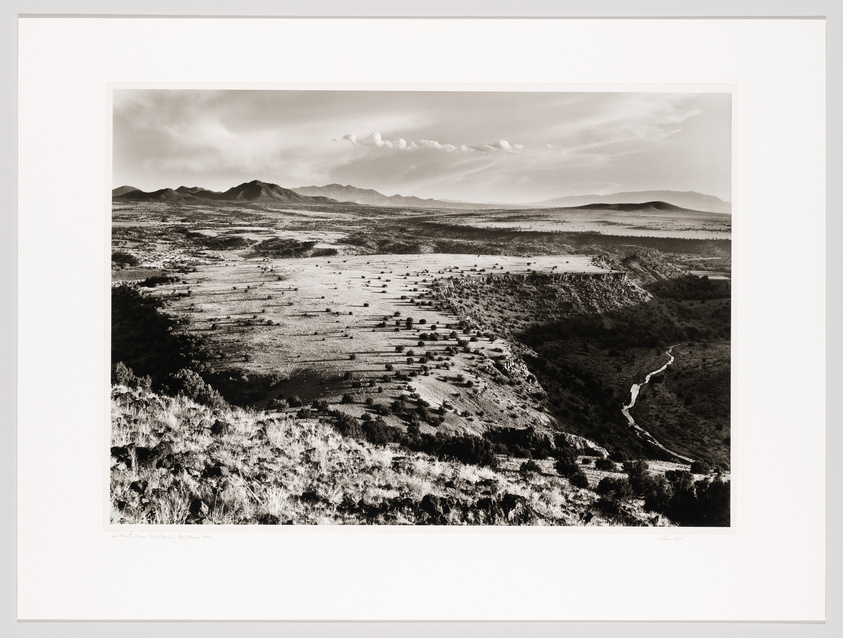02023-11-03 | Backstage, Photography, Rain Music
La Mesita is the 11th track from Rain Poems.
It started with the Saddest Chord Progression Ever. That was followed by this sketch on 30. June.
After listening to the music for a while I decided that the arpeggio was moving too fast. I then recorded it again, playing at half the tempo. This sounded much better to me. I realized that the fast arpeggio played back at half the speed would move at the same speed as the new arpeggio. So I recorded it at half speed–one of the greatest Pro Tools tricks–and added it. The slowed down guitar gives those chords a sense of gravity and adds low tones and fullness.
I had a certain landscape in mind when I worked on this piece and at some point I remembered a photo by William Clift.
This is the image, La Mesita, which is part of the Whitney Museum of American Art collection.

I met William Clift in 1989 or 1990 and bought a bunch of postcards from him and this one was my favorite. I also used one of his photos in the booklet of the 1991 album Borrasca. William Clift mostly works with a large format analog camera. Imagine walking through the landscape with a large format camera on a tripod and carrying a bag with stuff… film, light meter, etc. The dedication, contemplation and experience! He has a gallery in Santa Fe, at 203 East Palace Avenue.
02023-09-26 | Nature, Photography
Nature TTL POTY 2023: Winners Gallery
Nature TTL POTY 2023: Winners Gallery | Nature TTL
Breathtaking nature photography. (via Colossal)
02023-06-13 | Photography
Sunlight Illuminates Undulating Kelp Forests in Underwater Photographs by Douglas Klug
Colossal
Click on the link for more photographs.

02023-06-10 | History, Photography
“Use your feet to zoom in or out, because the less you carry, the more you will see. And the more you see the more photographs you’ll make.”
Remembering Ernst – Arthur Meyerson
My friend Arthur Meyerson remembers Ernst Haas, one of the greatest color photographers there ever was. Arthur told me that quote years ago and I will always remember it. Travel light and use your feet to zoom.
Certain people come into our lives and we are never the same afterwards.
This is the photo Arthur mentions in his post.
02023-04-10 | Photography
A few hours spent in our neighbourhood of Ōmori, photographing the cherry blossoms in the rain.
Rainy morning & sakura in Tokyo – Photographer in Tokyo, Japan
Gorgeous photo gallery.
02023-03-16 | Book, Environment, Photography

Great macro photography gallery of slime moulds by Barry Webb. Many gorgeous images. Via Iain Claridge
Formerly classified as Fungi, Slime Moulds are no longer considered part of that group. (Wikipedia)
Here is a quote from Ways of Being, by James Bridle.
In 2018 the same slime mould, Physarum polycephalum, showed that it was able to solve the traveling salesman problem in linear time, meaning that as the problem increased in size, it kept making the most efficient decisions at every juncture. Using the same method as the Tokyo rail experiment, researchers at Lanzhou University in China placed scraps of food in the place of cities and used beams of light to keep it from repeating connections. They showed that the mould took only twice as long to solve a map of eight cities as it did to solve a map of four cities – despite there being almost a thousand times more possible routes. In short, the slime mould easily completed a task that the most powerful computers in the world – and humans – absolutely suck at.





